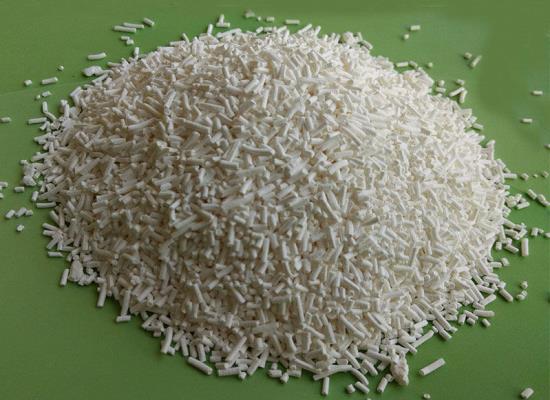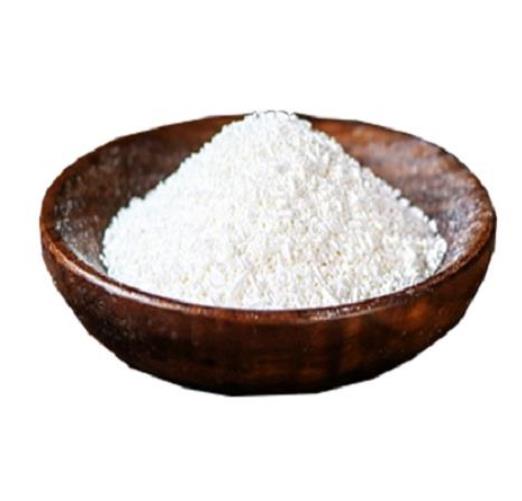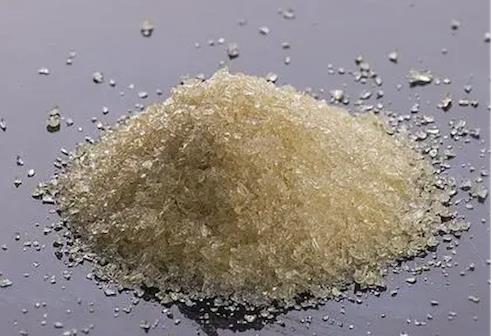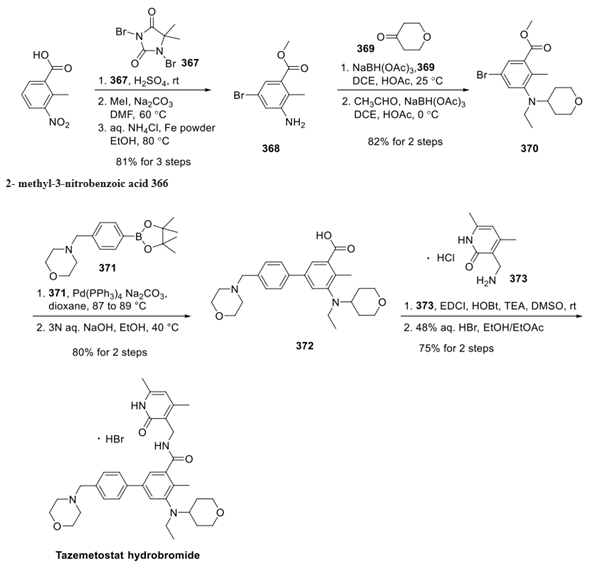Potassium Sorbate: Versatile and Effective Food Preservative with Alkylating Potential
General Description
Potassium sorbate is a widely used food preservative with low toxicity and high solubility. It is a white to light cream-colored powder that is soluble in water. It exhibits alkylating potential on the nucleophile 4-(p-nitrobenzyl)pyridine (NBP), which provides insights into its use as a preservative. However, further research is needed to fully understand the implications on human health. It is classified as an irritant and can cause skin and eye irritation. Proper handling procedures, such as using personal protective equipment and ensuring adequate ventilation, should be followed to minimize risks. Overall, potassium sorbate has valuable properties for food preservation but requires caution in handling and further investigation for its potential effects.

Figure 1. Potassium sorbate
Properties in the Food Industry
Potassium sorbate is a straight chain, alpha beta-unsaturated, trans-trans 2,4 hexadienoic monocarboxylic acid. It has a molecular weight of 112 and a pKa value of 4.75. Sorbic acid appears as a white crystalline solid at room temperature with a melting point range of 132°-137°C. The solubility of sorbic acid in water at 25°C is 0.16%, whereas the potassium salt of sorbic acid has a solubility of over 50%. This higher solubility makes potassium sorbate a preferred form for use in foods. However, in oils, sorbic acid is more soluble than the potassium salt. Potassium sorbate has various properties. It has a density of 1.361 g/cm3. It exhibits low vapor pressure (<1 Pa at 20°C) and is odorless. It is a white to light cream-colored powder that is soluble in water (1 M at 20°C, clear, colorless to faintly yellow). The pH range for potassium sorbate is 8-11 at 580 g/L at 20°C. It is stable but incompatible with strong oxidizing agents. Potassium sorbate is commonly used as a preservative in food products. Its properties, including its solubility, stability, and low toxicity, make it suitable for various applications in the food industry. 1
Alkylating Potential
Potassium sorbate is a widely used food preservative, but its alkylating potential has not been well studied. In a recent kinetic study, it was found that potassium sorbate exhibits alkylating activity on the NBP, which is a trap for alkylating agents with similar characteristics to DNA bases. The alkylation reaction of NBP and potassium sorbate follows a rate equation in which the alkylation time ranges from 18 days to over a month, depending on pH levels. The deltaH# for the reaction is 78 kJ mol(-1), which is higher than other stronger alkylating agents. Furthermore, the absorption coefficient of the sorbate-NBP adduct was determined to be epsilon = 204 M(-1) cm(-1), and this value can help establish suitable expiration times for products preserved with potassium sorbate. Overall, this study shows that potassium sorbate has an alkylating potential on NBP, which provides valuable insights into its use as a food preservative. However, further research is needed to fully understand the implications of this finding on human health and safety. 2
Safety Concerns
Potassium sorbate is classified as an irritant according to the Globally Harmonized System of Classification and Labelling of Chemicals (GHS). It can cause skin and eye irritation, as indicated by the GHS hazard statements H315 (causes skin irritation) and H319 (causes serious eye irritation). However, it has been verified to be of low concern based on experimental and modeled data, earning a green circle rating under EPA Safer Chemical classification. In terms of safety precautions, it is recommended to use personal protective equipment, avoid dust formation, and ensure adequate ventilation when handling potassium sorbate. In case of accidental release, it is important to avoid breathing vapors, mist, or gas, and to prevent the product from entering drains. Cleanup should be conducted carefully to avoid creating dust, and the material should be disposed of in closed containers through licensed disposal services. To prevent accidents, it is advised to avoid contact with skin and eyes, provide appropriate exhaust ventilation, and adhere to good industrial hygiene practices. Regular handwashing and proper glove usage are also recommended. Overall, while potassium sorbate may pose some irritant hazards, following proper handling procedures and safety measures can minimize risks and ensure safe usage. 3
Reference
1. Potassium Sorbate. National Center for Biotechnology Information, 2023, PubChem Compound Summary for CID 23676745.
2. Pérez-Prior MT, Manso JA, García-Santos Mdel P, Calle E, Casado J. Alkylating potential of potassium sorbate. J Agric Food Chem. 2005 Dec 28;53(26):10244-10247.
3. 2,4-Hexadienoic acid, potassium salt. European Chemicals Agency, EC / List no. 611-771-3.
You may like
Related articles And Qustion
See also
Lastest Price from Potassium sorbate manufacturers

US $6.00/kg2025-04-21
- CAS:
- 24634-61-5
- Min. Order:
- 1kg
- Purity:
- 0.99
- Supply Ability:
- 10000

US $0.00/KG2025-04-21
- CAS:
- 24634-61-5
- Min. Order:
- 1KG
- Purity:
- 99%
- Supply Ability:
- 10 mt




